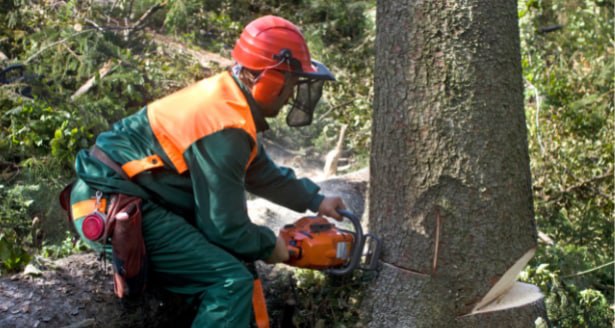Canker disease is a common issue that affects various tree species and can pose a serious threat to their health and longevity. Understanding how to diagnose and treat this disease is crucial for tree care and maintaining the vitality of your landscape. Here’s a comprehensive guide to help you identify and manage canker disease effectively.
What is Canker Disease?
Canker disease is characterised by localized areas of dead tissue on a tree’s bark, branches, or stems. These cankers can be caused by various pathogens, including fungi and bacteria, and they typically develop during periods of stress, such as drought or injury. If left untreated, cankers can girdle the tree, cutting off the flow of nutrients and ultimately leading to tree death.
Diagnosing Canker Disease
- Identify Symptoms
The first step in diagnosing canker disease is to look for symptoms. Common signs include:- Bark Lesions: Look for sunken, discoloured areas on the bark. Cankers may appear as dark, sunken spots that might ooze sap.
- Wilting Leaves: Affected trees may show wilting leaves or premature leaf drop.
- Dieback: Branches above the canker may die back, and the tree may exhibit overall decline.
- Inspect the Tree’s Health
Assess the tree’s overall health. Canker disease often occurs in trees that are already stressed due to environmental factors, pests, or other diseases. Check for any signs of weakened growth, such as stunted branches or discolouration. - Conduct a Close Examination
If you suspect canker disease, closely examine the affected areas. Use a knife to carefully scrape away the bark and inspect the wood underneath. Healthy wood will appear moist and light in colour, while diseased tissue will be dark and dry. - Consult a Professional
If you’re uncertain about your diagnosis, or if the infection appears severe, it’s best to consult a professional tree surgeon. They can provide a thorough assessment and recommend appropriate treatment options.
Treating Canker Disease
- Pruning Affected Areas
The most effective way to manage canker disease is to prune away the affected areas. Use clean, sharp pruning tools to remove cankers and any diseased wood. Ensure you make cuts well below the visible canker to prevent any remaining pathogens from reinfecting the tree. - Proper Disposal
After pruning, dispose of the infected wood properly. Do not leave it near the tree, as it may harbour pathogens that can spread to other trees. - Improving Tree Health
Strengthening the overall health of your tree can help it resist disease. Ensure it receives adequate water, especially during dry periods, and consider applying fertiliser if nutrient deficiencies are suspected. Mulching around the base can also help retain moisture and reduce stress. - Monitoring for Further Signs
After treatment, keep a close eye on your tree for any recurring symptoms. If cankers reappear, it may indicate a more severe underlying issue that requires professional intervention. - Consideration of Chemical Treatments
In some cases, fungicidal treatments may be recommended by a professional, particularly if the disease is widespread. However, these treatments should be used judiciously and in conjunction with good tree care practices.
Conclusion
Diagnosing and treating canker disease promptly is essential for preserving the health of your trees. By recognising the signs and taking action, you can help ensure that your trees thrive and remain a valuable part of your landscape. If you’re dealing with canker disease or any other tree health issues, contact Gillingham Tree Surgeons for professional advice and services. Our experienced team is here to help you maintain the beauty and vitality of your trees.
Call us on: 01634 564698
Click here to find out more about Gillingham Tree Surgeons
Click here to complete our contact form and see how we can help with your tree care needs.
